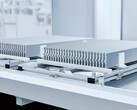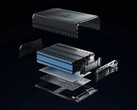New iron-based cathode could slash EV battery costs by 40%, with commercial viability expected in less than five years

The electric vehicle (EV) market is booming, but there’s one major obstacle keeping it from becoming truly mainstream—cost. A large part of that cost comes from the batteries that power EVs, specifically lithium-ion batteries (LIBs), which make up roughly 50% of a vehicle’s total price. These batteries, while efficient and reliable for their use-case, are designed from expensive metals like cobalt and nickel. However, a team of researchers, led by Georgia Tech’s Hailong Chen, may have found a solution that could lower the price of EVs drastically, and lessen the environmental impact of battery production alongside.
The team’s breakthrough is centered around a new cathode material made from iron chloride (FeCl3), a much cheaper and more sustainable alternative to traditional cathode materials. While standard cathodes are costly and rely on limited resources, the researchers claim that FeCl3 costs just 1-2% of these materials - all while delivering similar performance in energy storage. According to Chen, this could radically transform not only the EV industry but also large-scale energy storage systems, bringing down costs by a substantial margin.
By using FeCl3, the total cost of Lithium-ion batteries could be reduced by 30-40%, helping to close the price gap between EVs and their internal combustion engine (ICE) counterparts - one of the major reasons why people still think twice about switching to electric powertrains.
As per the research, the FeCl3 cathode has a higher operational voltage than commonly used cathodes like lithium iron phosphate (LiFePO4), meaning it can store and supply energy more efficiently. The research team, which includes collaborators from Oak Ridge National Laboratory and the University of Houston, believes that this tech could reach commercial viability within five years. Compared to the progress being made in the field of EVs, this is quite a realistic timeframe. The team is now working to perfect the material, with hopes that it will soon help drive down the cost of electric vehicles and make sustainable energy solutions more accessible not just in local markets, but on a global scale.


















